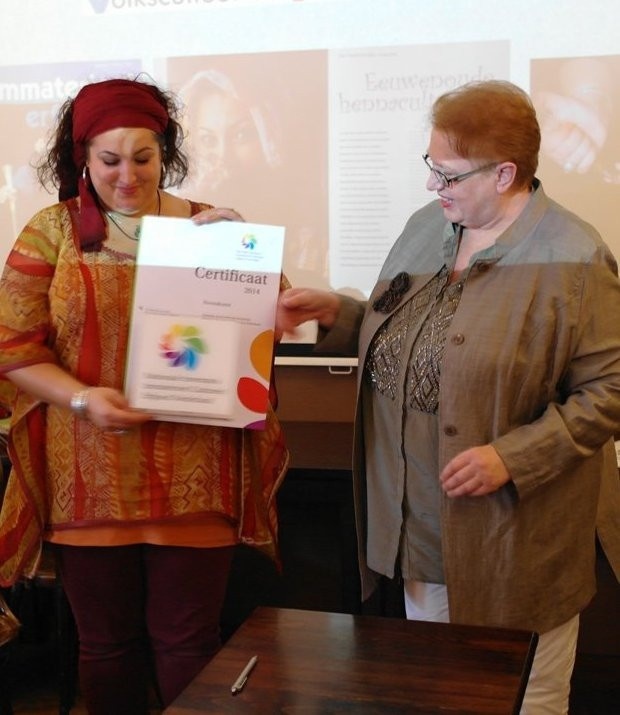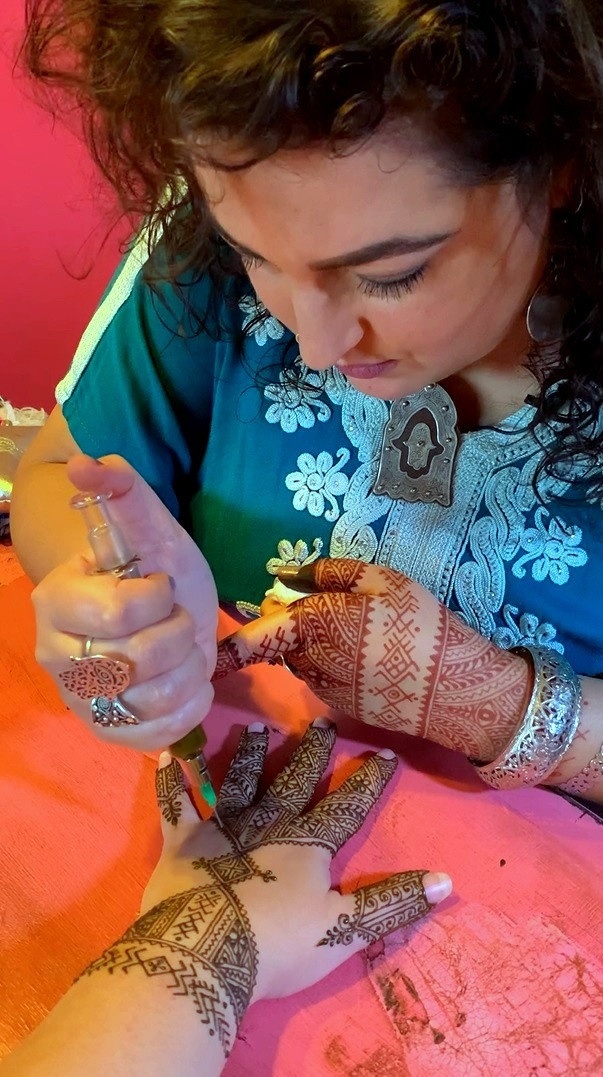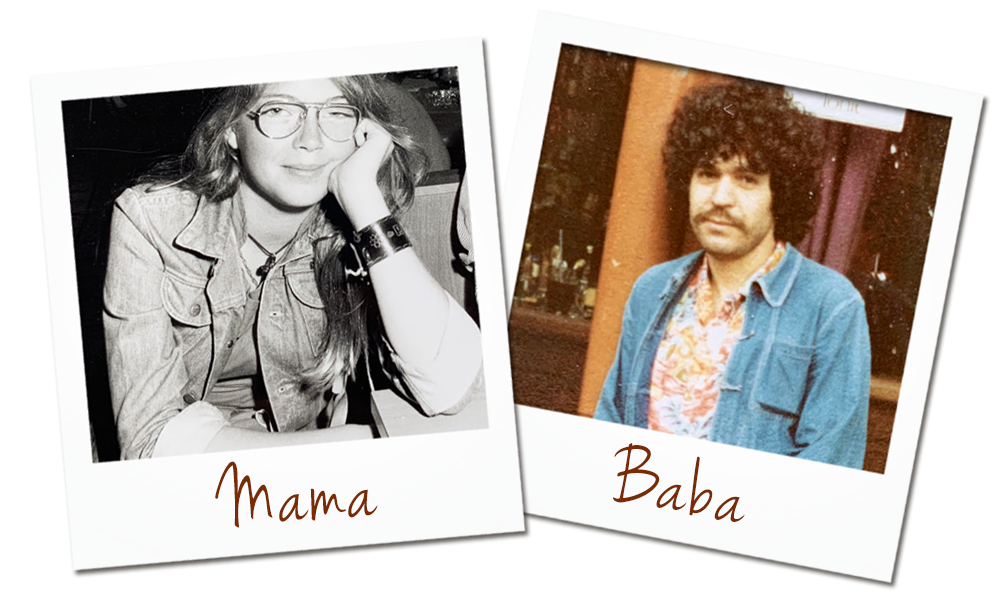Intangible Cultural Heritage Ambassador
Since March 2014 I ‘m one of the Intangible Cultural Heritage ambassadors in the Netherlands and I actively propagate and safeguard the practition of Moroccan Henna Art. Due to my safeguarding plans Henna Art was added to the National Inventory of Immaterial and Cultural Heritage in the Netherlands. This Inventory charts Intangible Heritage and helps communities and artisans to safeguard their traditions and preserve them for future generations.
The compilation of the National Inventory is one of the obligations the Netherlands undertook to fulfill when the UNESCO Convention for the safeguarding of Intangible Cultural Heritage was ratified.



What is Intangible Cultural Heritage?
Intangible cultural heritage (ICH) involves social customs, traditions, rituals, representations, expressions, particular knowledge of nature and craft skills that communities, groups and individuals recognize as a form of cultural heritage. It is passed on from generation to generation and from person to person.
Intangible cultural heritage is the bridge between present, past and future. It is culture of today, creates a sense of connectedness with earlier generations and is at the same time future-orientated, because people wish to pass it on to next generations.
Contrary to material heritage (buildings, objects, documents and monuments), intangible cultural heritage is a living and dynamic form of heritage, which adapts to and changes with time. It connects the community that practices it and identifies with it. Intangible cultural heritage constitutes the heart of that group of people, who often practice it with passion.


UNESCO Convention
The UNESCO Convention for the Safeguarding of Intangible Cultural Heritage aims to:
- Protect intangible cultural heritage;
- Promote the respect for intangible cultural heritage and its bearers;
- Raise the awareness of the significance of intangible cultural heritage at an international, national and local level;
- Ensure the recognition and appreciation of the cultural diversity;
- Promote international cooperation.
Worldwide 175 countries, including the Netherlands signed the UNESCO Convention for the Safeguarding of Intangible Cultural Heritage.


"I realized placement on the National Inventory by conceptualizing not only the future of Henna Art as a craft but also what is needed for the safeguarding of the traditions, customs, rituals and cultural heritage. For my efforts I received the official certificate mentioning the placement on personal title. That makes me the only Henna Artist entitled to use the logo of the National Inventory for her Intangible heritage. This official acknowledgement for Henna Art is unique in the world. An achievement I am very proud of."
"Moroccan Henna Art and Culture being my expertise, I take pride in the fact that I’m upholding a very rich and meaningful tradition that is passed down for generation to generation of women.
Regrettably we live in a time where nearly everything is fast, cheap and superficial. So-called henna artists work with quick-fix chemicals, that stain the skin swiftly, but endanger the health of the wearer. Designs are carelessly and often badly copied. All that seems to count is making a ‘henna tattoo’, quickly and for the lowest possible price. This degrades Henna Art to a cheap trick, befitting the trend: fast, cheap and superficial."

"Quite the contrary to my view on the matter. You won’t find the words “henna tattoo” anywhere in my vocabulary, except for here, in the explanation. Authentic Moroccan Henna Art is a craft that requires years of practice to master and entails a broad spectrum of (cultural) diversity, different styles, techniques, symbolism, traditions, meaning and rituals. Before you can even start ‘drawing’ a pattern, you have to know how to make the perfect henna pasta, using natural henna powder and other natural ingredients. Henna paste with precisely the right structure and coloring strength. That alone is a process learnt by continuous practice."
"Only after one as learnt about the henna paste, can one start learning about patterns. Every (regional)Moroccan Henna style consist of distinctive patterns, techniques, symbols and meanings. A Moroccan Neqacha (Henna Artist) always works freestyle and draws the hennadesign intuitively. Making sure, every one of them is truly unique. To achieve that level of mastery takes years of practice and study. Memorizing and combining the motifs in an endless variation of symbols, figures and patterns, combined with the hands-on technique that enables the Neqacha to follow her intuition is not something learnt in the wink of an eye. After the design is applied to the skin, the work is not yet completed. Aftercare is given to enable the henna to stay on the skin for as long as possible. After about 48 hours the henna stain will have attained its maximum color intensity."

Moroccan heritage in the Netherlands?
I'm often asked why I think a Moroccan tradition should be considered Dutch intangible heritage. Uhm wait let me be more precisely ... Actually it doesn't happen often that the question is formulated like this .... usually the opinion that a Moroccan tradition doesn't belong to Dutch Heritage is just thrown at me very straight forwardly.
Let me tell you my response to the matter, as summarily as I can.


When the Dutch government took young men from the North African shores to work as so called gast arbeiders (guest labors) to rebuild this country after World War 2, my father was one of them. These so called guest labors were treated as second class citizens that were only allowed to do the dirty and heavy jobs that no one here wanted to do.
They were paid poorly and some of them even paid with their health for the rest of their lives. So the plan that was presented by the government, to work for a few years and then go home with pockets full of money has became a disillusion to a whole generation. So they stayed and started to build a life here, despite the inequity they were dealing with on the daily.
My father met my mom and there was me, according to the official terminology, I'm a second generation "allochtoon" in the diaspora. When at least one of your parents has roots in a non western world country you are considered allochtoon, a rascist word to distinct people from one another. Just another way to remind you that you are not equal. The term allochtoon was replaced in 2016 for person with migrant background but the definition remains.
Long story short after me there came 3rd and 4th generation .... our present and future is here. We live in both cultures equally and we leave a stamp on Dutch culture as well as Dutch culture marks us.


Now this story is reflected in my Henna Art. When I started my Henna work I practised the traditions and the styles that I knew from my fatherland. As I developed as an artist I started to build bridges between women of all kinds of backgrounds. Henna connects everyone, despite their differences.
New traditions are evolving here in Europe. While we in Morocco never adorned a pregnant belly with henna it is something that has become one of my best selling services here in the Netherlands. Moroccan brides choose Indian designs for their wedding. Dutch women choose Moroccan designs for their wedding just because they fell in love with this ancient tradition.
We are a living melting pot and the way Henna traditions and culture has evolved in both Netherlands and Europe is because of this cross pollination between people of all kinds of cultures. This is what My Netherlands is like! This the reality that I live to the fullest and this is what I bring to the table in this country.
New traditions are rooting here and have a future of their own. This is just a new chapter in the long history of how Henna traveled through the world and became a custom in so many different cultures.
And I'm writing it, so damn right Moroccan Henna Art is Dutch Heritage!





